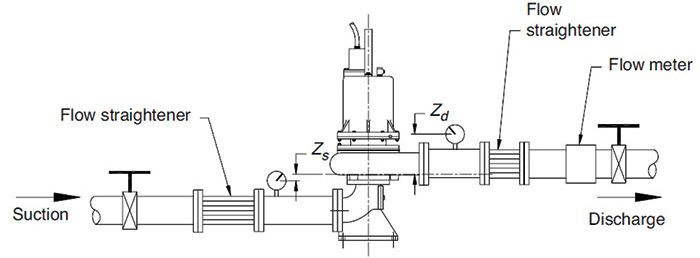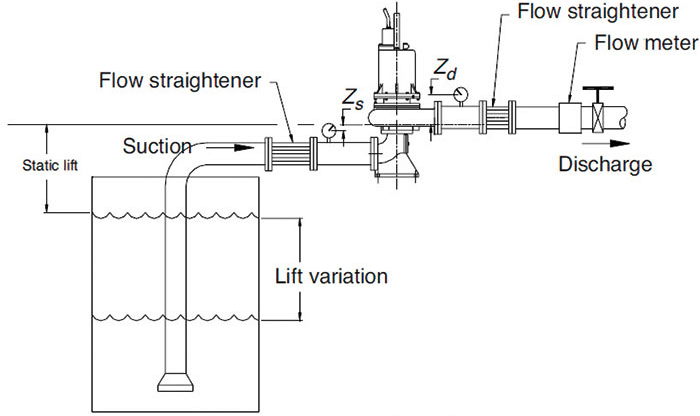What is NPSH3, and what are the methods for determining the NPSH3 of a rotodynamic submersible pump? NPSH3 is the net positive suction head available to a pump under test at a constant rate of flow when the pump head is decreased by 3 percent as a result of cavitation caused by a decreasing available suction head. Sometimes NPSH3 is referred to as net positive suction head required (NPSHr). However, a pump’s NPSHr must be higher than the NPSH3 for the pump to operate without head reduction, and it may need to be higher than the NPSH3 for long-term reliable operation. For more information on the required margins above NPSH3, refer to ANSI/HI 9.6.1 Rotodynamic Pumps Guideline for NPSH Margin. The NPSH is established through the datum elevation of the impeller. The flow toward the pump must be uniform and free of undue disturbances. A pump tested with suction piping may require a flow-straightening device before entering the pump. Arrangements for cooling or heating the liquid in the loop may be needed to maintain the required temperature.
 Image 1. Figure 11.6.7.2a. Suction throttling NPSH test setup
Image 1. Figure 11.6.7.2a. Suction throttling NPSH test setup Image 2. Figure 11.6.7.2b. Variable-lift NPSH test setup
Image 2. Figure 11.6.7.2b. Variable-lift NPSH test setup
